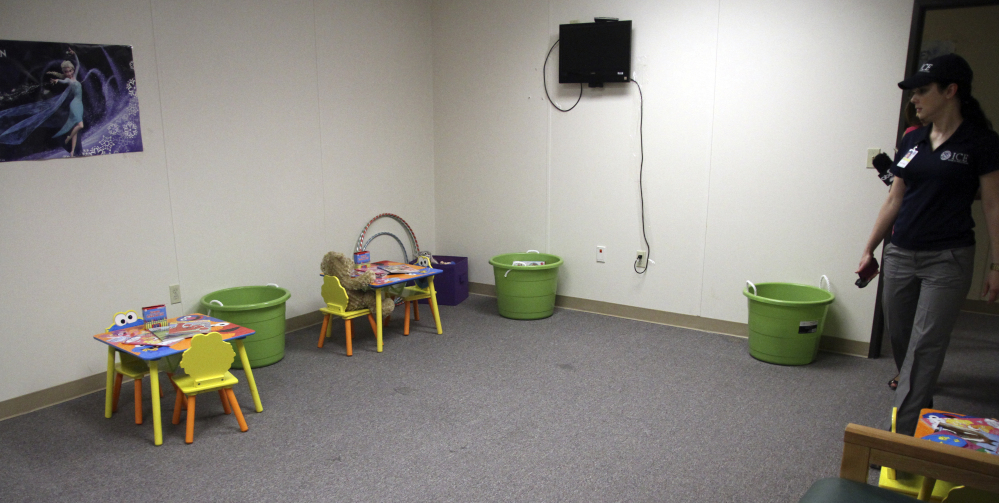ARTESIA, N.M. — A detention center being opened in southeastern New Mexico to deal with the surge in women and children caught crossing illegally into the U.S. from Central America will be focused on deporting the immigrants quickly, officials said Thursday.
During a media tour of the austere Border Patrol law enforcement training center turned immigration jail, U.S. Immigrations and Customs Enforcement said the goal is to process the immigrants and have them returned to their homes within 10 to 15 days.
Artesia Mayor Phillip Burch said he was told by federal officials that the detention center will likely be in operation for six months to a year, although he thinks it could stay open longer than that “unless the policy in Washington changes.”
Last week, the Obama administration announced plans to convert the Federal Law Enforcement Training Center into one of several temporary sites being established to deal with the influx of women and children fleeing gang violence and poverty in Central American.
Border Patrol agents have apprehended more than 52,000 immigrant children crossing the border alone since October.
The Artesia center will only house children caught traveling with their mothers or other female relatives. Unaccompanied minors will continue to be turned over to the Department of Health and Human Services.
The center will hold nearly 700 people in a barracks-style setting, with 30 rooms per building, four bunk beds per room. Each of the three buildings will have one room as playground and one for medical staff.
The buildings have a refrigerator that will be stocked with water, milk and fruit so the children will be able to eat whenever they want. There will be toys, video games and televisions for the kids. Some have questioned the amenities, saying they will only encourage immigrants who are desperate for a better life to try to come back.
News of the detention center opening in Artesia has stirred up fear and anger among some residents who worry about possible illnesses, a lack of resources and dramatic changes to this small, close-knit city in the middle of oil and gas country.
“I don’t know if they are bringing hungry people or dopers,” Cecil Laman, 89.
Others criticized the federal government’s response.
“What we should do is take them to the Air Force base, put them on a plane escorted by two fighter jets and send them back, and come back for the next group,” said Collier Allan, 62, who lives near the training center.
Send questions/comments to the editors.



Success. Please wait for the page to reload. If the page does not reload within 5 seconds, please refresh the page.
Enter your email and password to access comments.
Hi, to comment on stories you must . This profile is in addition to your subscription and website login.
Already have a commenting profile? .
Invalid username/password.
Please check your email to confirm and complete your registration.
Only subscribers are eligible to post comments. Please subscribe or login first for digital access. Here’s why.
Use the form below to reset your password. When you've submitted your account email, we will send an email with a reset code.